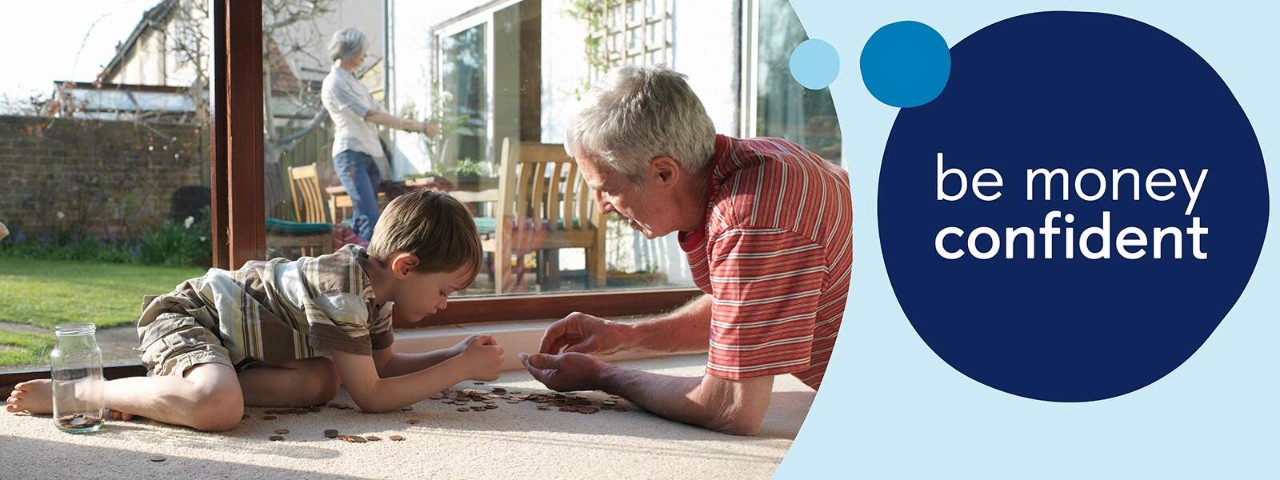Together we can end domestic abuse.
Getting started…your guide to saving for children
We all want the best for our children, and the young people in our lives.
And making sure they’re financially comfortable - and savvy - will pay dividends.
For many parents, carers, and grandparents, a key part of that is putting money away for them to access in future.
Even a relatively small amount every month will build into a handy nest egg over the years. And as they get older, it can also be useful for teaching young people about the benefits of being a regular saver. Kids will soon learn why it makes sense to have a rainy day fund as well as understanding the benefits of long-term financial planning and resilience too.
This simple guide will help you get started and give you the confidence to make the right decisions for you and your children when it comes to saving for their future.
What are you saving for?
There are different ways of saving for children, and your own circumstances will determine which is best for you.
Ask yourself what you’re saving for, and over what time frame - for example, is there a long-term goal such as university costs, a gap year, driving lessons or even a car or the deposit on a flat?
Will your child need access to the money, or are you happy to lock it away until they are older?
And who will be in control of withdrawals and spending - you or your child?
Keep these questions in mind as you read through the rest of this guide, and it will help you make the right savings plan for you and your family.
How can you start saving for children?
You can start teaching very young children about saving with a piggy bank. They will learn about money, the different values of notes and coins, and that you may have to save up for something you want, whether it’s a packet of sweets or a toy. Even if they are just saving a few pence here and there, it is a great way of starting a savings habit.
You can open a bank account for a child at any age, which may help them learn valuable life skills and money confidence and is an ideal way for them to manage pocket money and birthday cash. However, if you are saving for a long-term goal, you may not want to give a child or young teenager access to what could grow into a significant sum.
Find out more information about TSB savings accounts for children.
What about a Junior ISA?
A Junior ISA lets you save up to £9,000 for a child in each tax year. Anyone, including grandparents, other relatives, and friends, can pay into the account without affecting their personal ISA allowance.
Any gains, such as interest or investment returns, are tax free.
Parents or guardians manage the ISA until the child takes control when they are 16. They cannot withdraw any money before they are 18.
You can choose between a cash ISA, which pays interest - TSB Junior Cash ISA, and a stocks and shares ISA, which invests the money in the stock market. This means you may lose money if the value of your investments falls and is best suited for longer term saving. TSB has teamed up with investment platform Wealthify to offer a Junior Stocks and Shares ISA.
Tax treatment depends on your individual circumstances and may change.
Can other people pay into a child’s account?
Anyone can pay money into a child’s bank account, or Junior ISA. The money will belong to the child, even if a parent has control of the account.
Who can withdraw money, and can I control what my child spends the money on?
A parent or guardian controls a Junior ISA until the child turns 16. They can make withdrawals and spend it how they like from the age of 18.
Are there tax implications?
Any gains from a Junior ISA are tax free. If you have put money into another account or investment for your child, then any interest or returns over £100 a year will be taxed as if it were yours.
Tax treatment depends on your individual circumstances and may change.
Can I start a pension for a child?
This is the ultimate form of long-term saving for your child’s future. You can open a pension for a child at any age and pay in up to £3,600 a year. They will gain control of the pension when they turn 18, but under current rules, will not be able to access any of the funds until they are 57. The earlier you start a pension, the longer it has to grow, so this could be a great way of ensuring your children have long-term security. But make sure you are comfortable with locking the money away for more than 50 years.
TSB acts as an introducer for the investment products (Stocks & Shares ISA, General Investment Account, Junior ISA) of Wealthify. There are other investment service providers available.
Neither TSB or Wealthify give you any advice or recommendations about these products - it’s up to you to decide whether the product is right for you.
TSB and Wealthify operate on a 50/50 revenue share arrangement of the management fees after costs. There will be no additional costs for you, the customer. All fees are the same if you went direct to Wealthify. Both TSB and Wealthify are authorised and regulated by the Financial Conduct Authority.
Please remember, investments are designed for the long term and unlike TSB’s savings products, the value of your investments can go down as well as up, and you could get back less than you invested.
The tax treatment of your investment will depend on your individual circumstances.
Related articles

